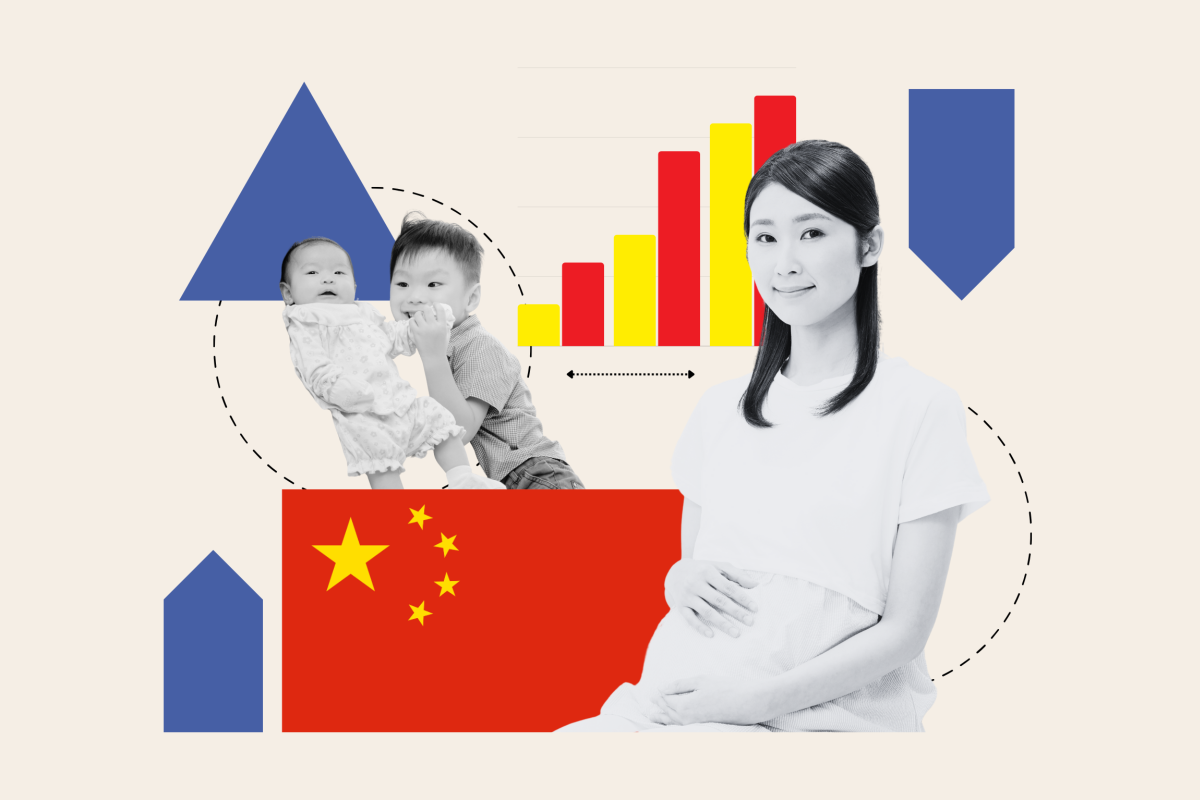What's New
China hopes a series of recently introduced measures will start to affect the country's declining birth rate, which policymakers fear will be a long-term drag on the world's second-largest economy.
However, analysts point to the failure of past government initiatives and say any new policies have little chance of stopping a trend strongly driven by changing societal attitudes.
Newsweek reached out to the Chinese embassy in the U.S. by email with a request for comment.
Why It Matters
China's fertility rate, which last year reached 1.0 births expected per woman's lifetime, is far below the 2.1 rate considered necessary to replace a population. This, coupled with a graying workforce, will burden social safety nets, increase the dependency ratio and overwhelm the country's minimal social protections.
Despite the expansion of China's decades-old one-child policy to two children in 2016 and three children in 2021, progress has been elusive in the face of changing attitudes among younger generations, the rising cost of living in major cities, and the uncertainties of China's economic slowdown.

What To Know
In late October, China's Cabinet-like State Council revealed a suite of new measures, including childcare support services, housing, employment and initiatives to support a "birth-friendly social atmosphere," state media reported.
Among the new measures, China's maternity insurance scheme will be expanded to include flexible workers, those in new forms of employment, and rural migrant workers already enrolled in the basic medical insurance the country provides for workers in urban areas.
It was also stated that medical insurance would now cover labor pain relief and assisted reproductive technology services.
The State Council also announced a new subsidy system specifically for childbirth and called on local governments to implement maternity and childcare leave policies, as well as providing subsidies for births.
To support families with multiple children, localities are encouraged to increase borrowing limits to enable families to purchase homes more easily. Additionally, childcare service centers are being established at city and prefecture levels to assist working parents.
In July, state media cited China's National Health Commission as saying all provinces had extended maternity leave by at least 60 days, equating to total maternity leave of 158 days or more, while setting a minimum of 15 days of paternity leave.
Some Chinese cities are also moving to support "childbirth-friendly" positions for working parents in a bid to ease some of the burdens facing potential parents, which may serve as local models for addressing China's declining birth rate.
Shanghai recently introduced "childbirth-friendly" jobs with flexible hours, remote work options and performance-based evaluations, targeting industries like manufacturing, elder care and the digital economy. Employers will offer retraining for mothers and label roles at job fairs and online platforms.
The news of those policies follows the northeastern city of Qingdao's move toward launching over 1,000 "mommy positions" in fields such as catering, social media and e-commerce.
What People Are Saying
Elliott Fan, professor at National Taiwan University's Department of Economics, told Newsweek: "The driving force behind the declining fertility rates in China, as well as in other Asian countries, is the shift in social norms and lifestyles, which increasingly discourage marriage, particularly among women.
"Broadly speaking, there are no highly effective policy measures capable of halting this downward trend, let alone reversing it. While cash transfers, subsidies and maternal leave provide some support, their impact remains limited."
Peng Xiujian, senior researcher at Australia's Victoria University, told Radio Free Asia: "China's new measures will be slow to take effect, and it is impossible to change people's willingness to have children all at once."
What Happens Next
In October, the National Health Commission's China Population and Development Research Center announced a survey of 30,000 women across 150 counties in China to better understand prevailing attitudes toward parenthood. These findings may serve as the basis for future pro-natal policies.




















 English (US) ·
English (US) ·